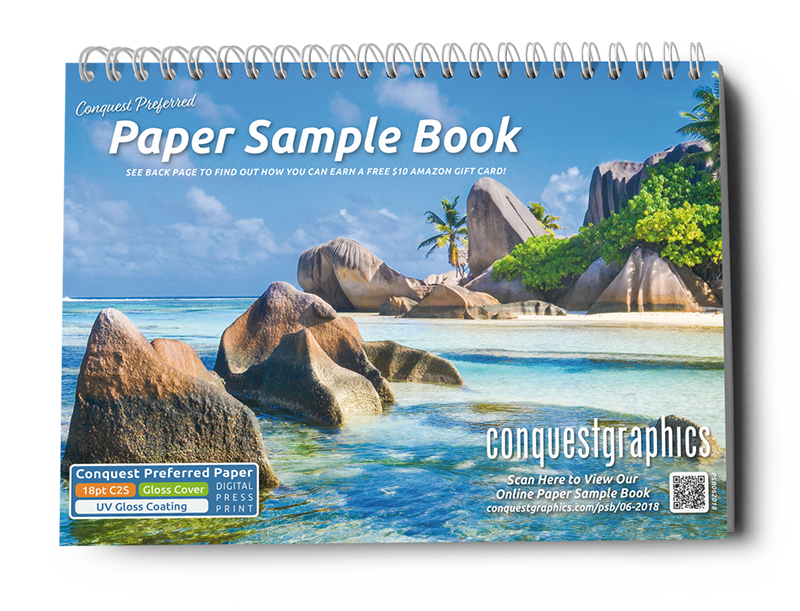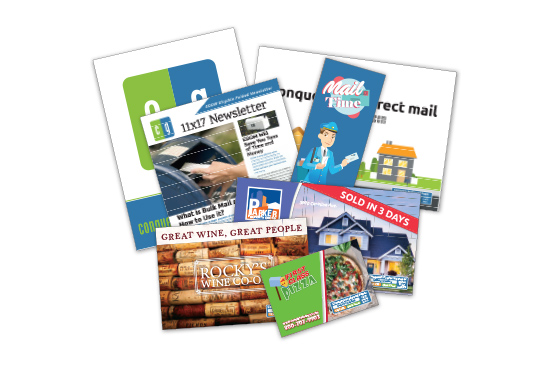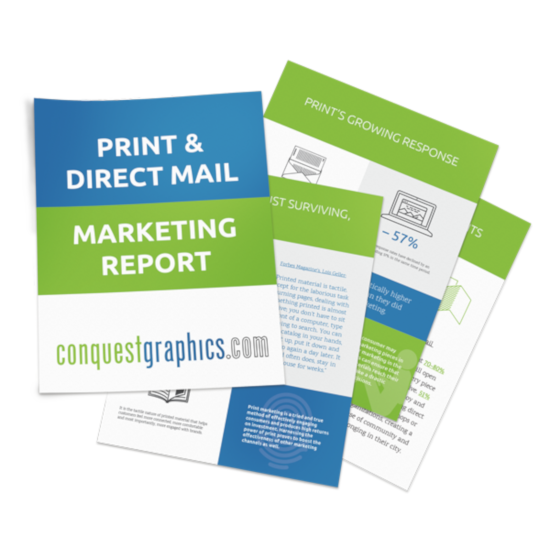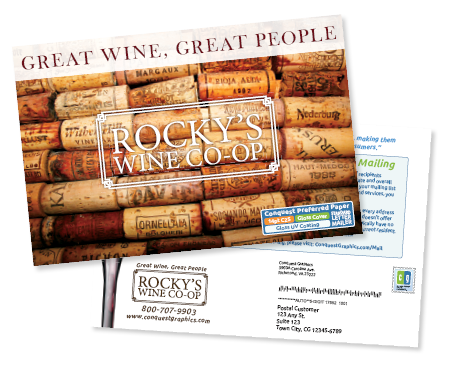
It's hard to think of a single medium that's changed the world as much as print. We’ve gathered 10 of the most interesting and surprising commonly used English words and idioms that have revolutionized how humans talk about media while also having subtle effects on how it continues to be shaped in the future origins in the print industry.
1. Above or Below the Fold or just “The Fold”
The opposite of above the fold is an equally important word, especially for marketers and advertisers.
This term is used in many publications where page turning or unfolding is required to read certain content. Ads placed on the “below the fold” section of newspapers didn’t cost as much, which began to lead to a push by advertisers to open up the “above the fold” portion of the front page of newspapers to their highest paying clients. Clients that would be more than capable of covering the cost to the newspaper so they can *guarantee* that absolutely every person who sees the newspaper, even if it’s folded or tied, will have some amount of exposure to the ad.
Newspapers that resisted this push to put ads on the covers of newspapers argued that there were highly negative ethical implications that would degrade society by replacing the hard truth and pure journalistic integrity that used to be characteristic of newspapers with the glittery, almost scandalous text and image embellishments of an individual product, service or brand.
If you look at what remains of your nearest city’s newspaper (assuming the city will still has one and it hasn’t gone to a completely e-subscription based edition), you will most likely see ads, that’s right adS (plural) littered around front super-header.
2. Above the Fold
Ever since the invention of the folded printed media, the phrase “above the fold” was used to indicate the positioning of an article or image on a newspaper in relation to the fold (usually in the upper half of the page when fully unfolded). Since then, there have been a number of applications of the phrase in media other than folded newspapers.
For example, you could easily walk into the office of any web designer or Google Ads specialist today and hear them using the phrase to describe content that is placed on the section of the website that is initially visible with out any scrolling necessary.
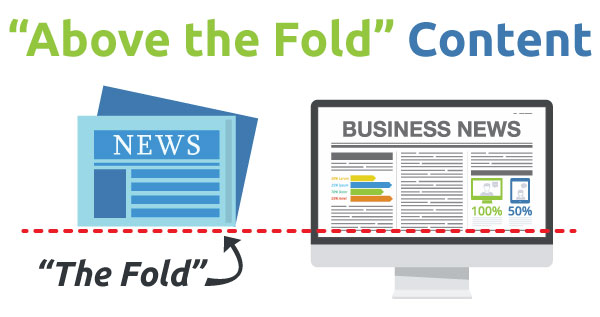
Like how newspapers require unfolding to access a second “tier” of content that is deemed by layout editors to be of a lower importance level, most webpages today will have a “below the fold” section of less prioritized and therefore less valuable placement for content or ads. The same goes for mobile apps which have primary and secondary tiers of advertisement placement.
Digital advertising standards, however, are showing us that visual banner ads like these are becoming less tolerable to consumers, and even adding a few small banners to trusted ad-free apps can make customers quit the app for good.
Ads anywhere below the bottom of most scrolling screens have a cheaper price, and sometimes depending on who’s placing it, it may never even place at all. Unlike print which has to physically be taken around and, in the process, unfolded to be used to its full potential, mobile, laptop, monitor screens, and Smart TV screens present virtually unlimited pixels over time to use in whatever combination of display times and speeds and capabilities as a programmer can dream up and have the patience to can add in.
3. Centerfold
Although a word that’s been declining in usage since 2004, we included this iconic word because it’s also a great song! Thanks to The J. Geils Band, the printing term for a printed page folded or otherwise stitched into a catalog, magazine or other folded piece will forever be immortalized through ridiculously catchy repetition.
Song references aside, the word centerfold did earn a more permanent place in somewhat unexpected subject matter thanks to one magazine’s famous implementation of removable and hangable centerfold posters that featured provocatively posed women for the purposes of hormonal excitement.
The word changed meanings a third time when people began to use the word to label women of a certain physical beauty and stature, in some cases in an objectifying manner.
Even though the usage of the word is on the decline still, it’s lasting legacy in American Pop History will forever include a collection of possible meanings, each one indicating the way media naming eventually shapes the media named and then names new media.
4. Out of Sorts
This phrase basically means “feeling a bit off, unwell or grumpy,” which is entirely appropriate for it’s original implementation in printing to describe a situation when a printer working on plating a page finds themselves entirely out of the needed “sorts” of type. This could have been for a number of reasons, whether they couldn’t afford extra sorts (which were very pricey), or maybe they miscalculated how many they’d need for the given page before starting.

A “sort” is basically an induvial cast piece of type. For most of the history of print, purchasing type was expensive, so many penny-pinching printers would attempt to cut costs to their business by only purchasing the bare minimum they predicted needing of each sort at any given time while printing.
When printers faced this situation, there were very few choices of what to do to move forward, either scrap everything or get creative with bits and pieces of lettering to try to emulate the missing ones… or still worse, hand pen it into every copy.
These kinds of improvised publishing solutions weren’t something that was preferred, but it was often necessary for smaller scale publishers who were constantly trying to figure out how to cut their costs further.
5. Uppercase and Lowercase
Did you ever wonder why we call capitalized letters “uppercase” and uncapitalized letters “lowercase?” What’s with the whole “case” thing?!
It might be a surprise to you that, TA-DA: print is to thank for the existence of those words, too!
Faced with an ever-expanding collection of sorts and plating tools, as well as a need to more quickly and accurately select the letters they needed as they were plating, printers devised a sort of box system that placed the most commonly used letters closer to them while also keeping their letters separate and organized so they could be as quick and efficient as possible while plating.
If you think, for a moment, like a printer, you could extrapolate that each letter of the alphabet will need two separate boxes to store the sorts of each letters’ 2 “cases,” (those that were capitalized and those that weren’t). Since capitalized letters are used less often than lowercase, their cases were placed higher up (and further away from the person doing the plating) in the “uppercase” so the uncapitalized letters could be in the “lowercase,” making them more convenient for quick selection during plating.
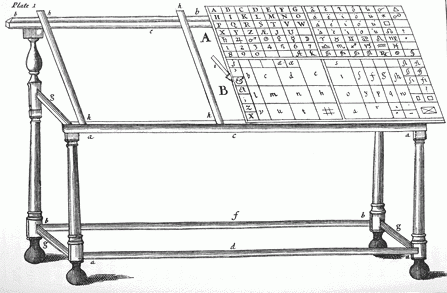
Figure 1. Example of how a printer's table was typically arranged, allowing for printers to choose the right letter's sort as quickly as possible. This included uppercases for capitalized letters and lowercases for uncapitalized letters.
6. Hot Off the Press

If you’ve ever watched old school superhero cartoons, you’ve most likely heard the phrase “Hot off the press!” shouted by the editor-in-chief or a similar news authority as they announce the very latest headlines.
The actual phrase originates from the process called “hot metal printing,” which would inject molten lead into a mold to form printing blocks for letters that were input using a sophisticated typewriter like keyboard interface.
The idea of the actual paper being hot to the touch has various implied meanings about the content’s freshness and newsworthiness, but ultimately, it was a figurative expression since the paper never ended up getting too hot.
Rather the hottest thing in the process was the molten lead which was only used in the process of creating sorts, not the actual inking of the paper.
7. Stereotype
Because of the constant scarcity of type supplies that most print presses faced as an everyday reality, it began to become necessary for printers to find alternative solutions so as not to waste money on higher quantities of expensive individual sorts.
It became common for printers to make “stereotypes” of their most commonly used words, phrases, and often entire pages so they could simultaneously keep printing an entire page with a stereotype while its original plate could be “distributed” or broken apart into the original sorts to be applied to the next page.
Print shops were all practically working on a page to page basis, but stereotyping allowed for them to create reusable casts of large groups of previously cast information for repeated printing.
And this is the idea behind the word as we have it in modern English: A stereotype in print became a metaphor for societal “molds” and labels that are sometimes unjustly applied to racial, ethnic or even religious groups outside the norm. Stereotypes were used to create thousands of exact printed copies from a single original setting of type just one step further and you get the modern meaning: the unfair assumption that every person from a single group is the exact same.
Figure 2 a case filled with various stereotypes which each hold commonly combines letters in a single "sort." This allowed printers to save a significant amount of time arranging individual letter for commonly used words when plating.
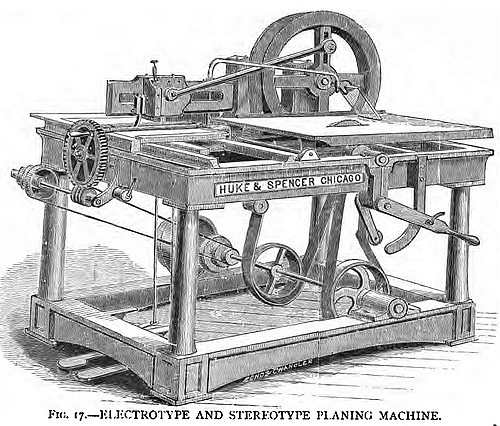
8. Cliché
The technological advancements and techniques that were being developed during the early days of the printing industry tended to be focused on improving the efficiency of presses by decreasing the amount of time a job would spend in the longest stage of the printing process: plating. Inventions like stereotypic metal plates were made with efficiency and convenience in mind since they were more quickly and cheaply made than the original sorts.
The French had a very similar technical solution to that of stereotyping, but instead of casting whole plates of metal to make their most popular sorts, they cast smaller pieces of text that had commonly used phrases in them so they could be used in multiple projects and function in a slightly more flexible manner than full page stereotypes.
Cliché is the French word for stereotyping that originated from the verb clicher which means “to click.” The word itself was an onomatopoeia for the sound that the cliché “phrase plates” made when they struck metal as they were being shaped.
In modern English, we use the word in a completely figurative manner to describe phrases that were overused and worn out.
English students today are taught to always avoid clichés to keep their writing from seeming unoriginal, fluffy or bland.
Just in case you can’t remember what a cliché is, here are a few we found online in advance for you!
- All that glitters isn't gold
- Don't get your knickers in a twist
- All for one, and one for all
- Kiss and make up
- He has his tail between his legs
- And they all lived happily ever after
- Cat got your tongue?
- Read between the lines
- Someone woke up on the wrong side of the bed
- We're not laughing at you we're laughing with you
9. Typecasting

When an actor is chosen for a role because they fit a certain racial, ethnic or other social/personality profile, they have been typecast.
The words “type” and “cast” are both words from the world of print, so it seems odd that they somehow worked their way over into yet another medium: dramatic performance.
In one of the common processes for shaping metal into type, you create a mold into which molten metal is poured. It then cools and hardens into the shape defined by the mold. This process is called casting, and the word typecast is believed to be a nod to it. The same metal shaping method is also where “to fit a mold” comes from.
10. Make an impression
While this figure of speech is a metaphor for doing something that makes you memorable, the metaphor goes that thoughts are imprinted into our minds to make memories just as words are imprinted onto pages to make books. In both metaphors, what is recorded or put to memory is an impression of the actual events that they’re based on.
The Latin root of the word imprint is imprimere which means “to press into or upon.” This word indicates an action that is typically performed by objects such as stamps, rollers, or printing presses.
Whether you’re dressing nicer than normal to leave a good first impression, or whether you’re making an impression upon history by leaving a legacy of who you are in people’s memories, you’re relying upon figurative language that comes from the printing industry.
The previous article was researched, edited, and developed as a collaborative print project in the spirit of the day on which it was written (October 17, 2018 - International Print Day). For this year’s celebration, the concept of “collaboration” was selected to be the central theme. This theme encouraged self-identified members of the print industry to celebrate the incredible accomplishments they make every day at work as they collaborate with other members of the printing industry.
10 Common English Words and Phrases That Came from the Print Industry
It’s easy to make an effective brochure when you have lots of money to spend, but here we help you make an effective marketing brochure on a tight budget.
By Conquest Graphics
